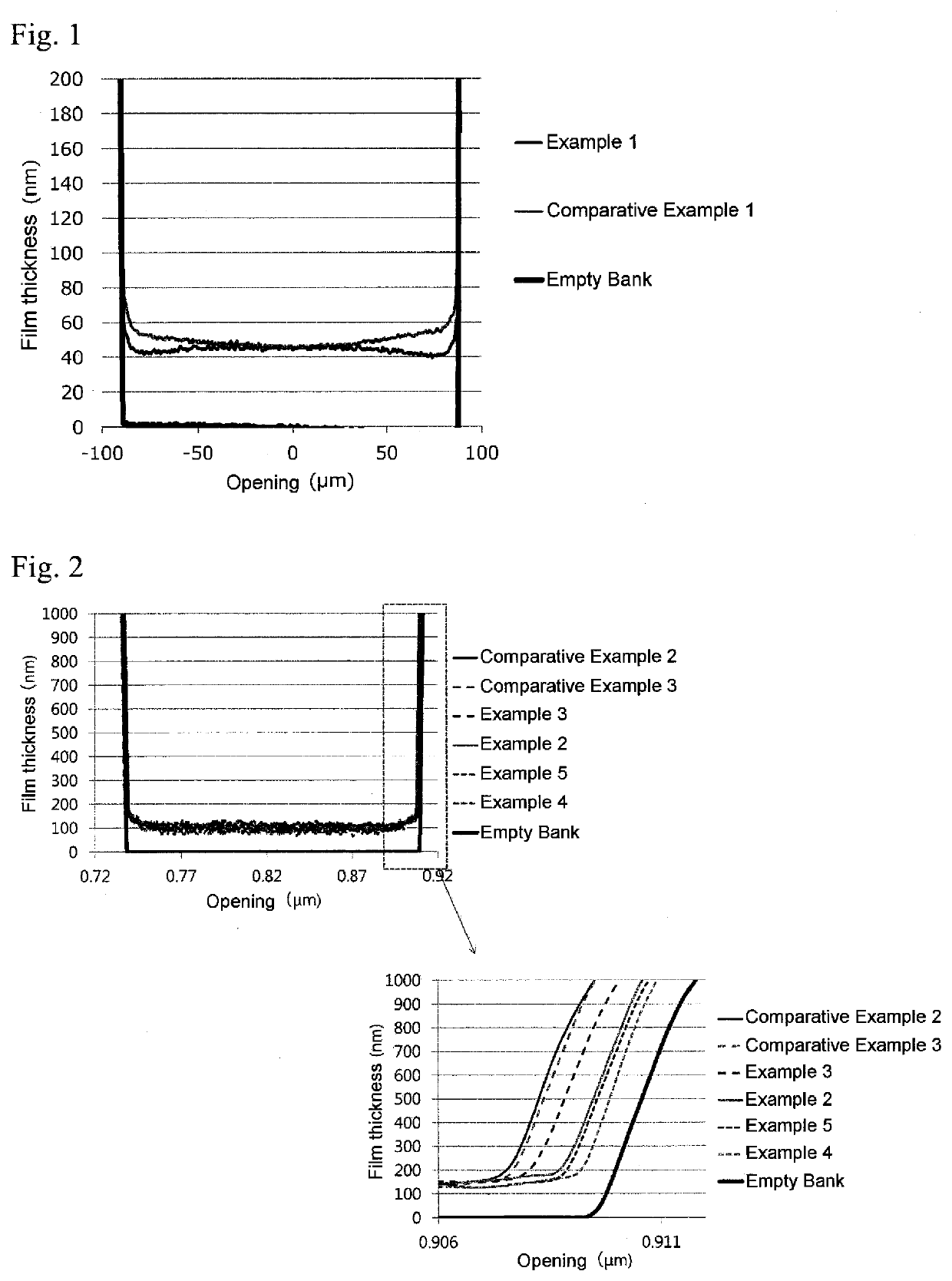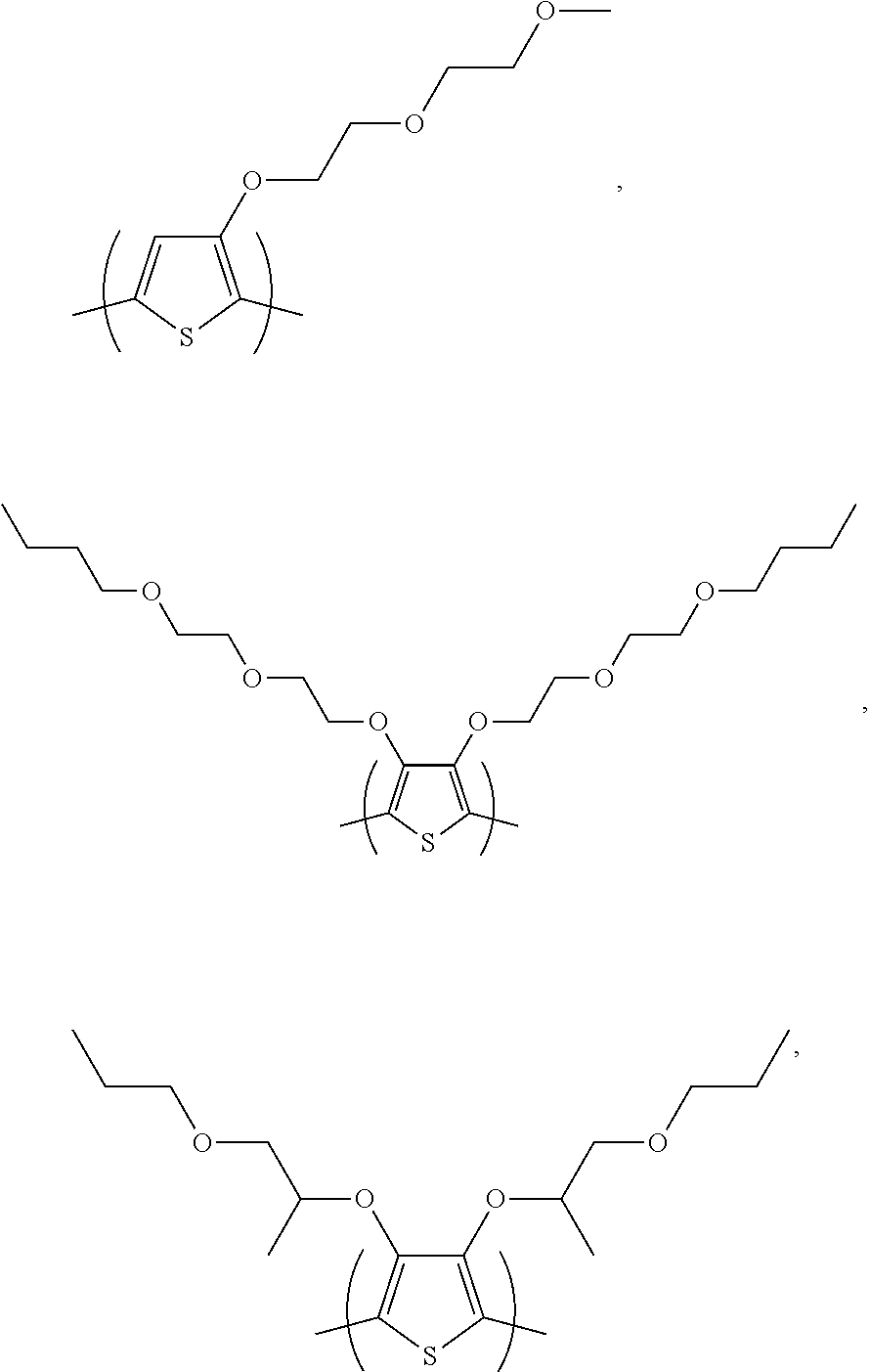Non-aqueous ink composition
- Summary
- Abstract
- Description
- Claims
- Application Information
AI Technical Summary
Benefits of technology
Problems solved by technology
Method used
Image
Examples
production example 1
Preparation of Amine Adduct of S-Poly(3-MEET)
[0401]500 g of an aqueous dispersion of S-poly(3-MEET) (0.598% solids in water) was mixed with 0.858 g of triethylamine, and the resulting mixture was evaporated to dryness by rotary evaporation. The resulting residue was then further dried using a vacuum oven at 50° C. overnight to give an amine adduct of S-poly(3-MEET) as 3.8 g of a black powder product.
production example 2
[0402]2.00 g of the amine adduct of S-poly(3-MEET) obtained in Production Example 1 was dissolved in 100 ml of 28% ammonia water (manufactured by Junsei Chemical Co., Ltd.) and the resulting solution was stirred at room temperature overnight. The resulting reaction mixture was subjected to reprecipitation with 1,500 mL of acetone, and the precipitate was collected by filtration. The obtained precipitate was dissolved again in 20 mL of water and 7.59 g of triethylamine (manufactured by Tokyo Chemical Industries Co., Ltd.) and stirred at 60° C. for 1 hour. After the resulting reaction mixture was cooled, it was subjected to reprecipitation with a mixed solvent of 1,000 mL of isopropyl alcohol and 500 mL of acetone, and the precipitate was collected by filtration. The obtained precipitate was dried in vacuo (0 mmHg) at 50° C. for 1 hour to obtain 1.30 g of S-poly(3-MEET)-A, which is a charge transporting material treated with ammonia water.
(2) Preparation of Charge Transporting Varnish...
example 1
[0403]First, the solvent in an aqueous solution D66-20BS was evaporated using an evaporator, and the resultant residue was dried at 80° C. for 1 hour under reduced pressure using a vacuum drier, to obtain a powder of D66-20BS. The obtained powder was used to prepare a 10 wt. % solution of D66-20BS in ethylene glycol. This solution was prepared by stirring at 400 rpm at 90° C. for 1 hour using a hot stirrer.
[0404]Next, another vessel was provided, and 0.020 g of S-poly(3-MEET)-A, obtained in Production Example 2, was dissolved in 1.13 g of ethylene glycol (manufactured by Kanto Chemical Co., Ltd.), 1.95 g of diethylene glycol (manufactured by Kanto Chemical Co., Ltd.), 4.88 g of triethylene glycol dimethyl ether (manufactured by Tokyo Chemical Industry Co., Ltd.), 0.98 g of 2-(benzyloxy)ethanol (manufactured by Kanto Chemical Co., Ltd.), and 0.032 g of butylamine (manufactured by Tokyo Chemical Industry Co., Ltd.). The solution was prepared by stirring at 80° C. for 1 hour using a ho...
PUM
| Property | Measurement | Unit |
|---|---|---|
| Percent by mass | aaaaa | aaaaa |
| Percent by mass | aaaaa | aaaaa |
| Percent by mass | aaaaa | aaaaa |
Abstract
Description
Claims
Application Information
 Login to View More
Login to View More - R&D
- Intellectual Property
- Life Sciences
- Materials
- Tech Scout
- Unparalleled Data Quality
- Higher Quality Content
- 60% Fewer Hallucinations
Browse by: Latest US Patents, China's latest patents, Technical Efficacy Thesaurus, Application Domain, Technology Topic, Popular Technical Reports.
© 2025 PatSnap. All rights reserved.Legal|Privacy policy|Modern Slavery Act Transparency Statement|Sitemap|About US| Contact US: help@patsnap.com



